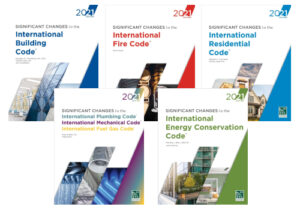
Significant changes to definition of change of occupancy in the 2021 International Building Code
A modification to Section 202 (Definition of Change of Occupancy) of the 2021 International Building Code states that the scope of a change of occupancy has been narrowed where no classification change takes place.
Every building, or portion of a building, must be assigned an occupancy classification with respect to its use by placing it into one of the specific occupancy groups identified in Chapter 3. These groups are used throughout the code to address everything from allowable building size to required fire protection features. The occupancy classification process represents identifying a distinct hazard, or more typically a group of hazards, that must be specifically addressed throughout the applicable code requirements. For example, the classification of Group A recognizes those assembly-related concerns associated with theaters, night clubs, places of worship and other facilities where large numbers of people congregate in a concentrated manner. Where there is a change in the use of the building that modifies the type or extent of the hazards created by the new use, a change of occupancy occurs. The scope of a change of occupancy is now more specifically stated in order to identify when such a condition takes place.
Historically, a change of occupancy only occurred where there was a specific change of the building’s occupancy category. This included both changes within an occupancy group, as well as changes from one occupancy group to another. This scope of a change of occupancy was modified in the 2015 IBC to include a change in use, and clarified in the 2018 edition to indicate that all such changes in use that result in a change in the code’s application are considered as a change of occupancy, even if no change in classification occurs. The 2021 IBC has been further revised to narrow the scope of a change of occupancy where there is no change in classification.
Where no change in occupancy classification occurs, a change of occupancy now exists only in those buildings where 1) there is a change in a building’s purpose or level of activity, 2) that functional change is such that the current IBC requires a greater degree of regulation than presently exists in the current building, and 3) the greater degree of regulation required by the current IBC occurs only in the areas of accessibility, structural strength, fire protection, means of egress, ventilation or sanitation. The intent is to limit the application of a change of occupancy where there is no change in classification to only those new uses that present a higher risk to the life safety or welfare of the occupants than was created by the previous use.
Due to the restructured scope of the definition, there is a question as to how to address a building that undergoes a change in occupancy classification where no greater degree of safety, accessibility, structural strength, fire protection, means of egress, ventilation or sanitation is required by the code. An example is the remodeling of a Group A-2 assembly space in a manner where it would be reclassified as Group B. Where the new use poses an equal or lesser hazard level, but such use is classified as a different occupancy, it would seem appropriate to also consider it as a change of occupancy even though no modifications would be required.
Read the full significant change.
 The 2021 Significant Changes guides are available for the International Building, Fire, Residential, Energy Conservation, Plumbing, Mechanical and Fuel Gas Codes. This valuable series can help any code user save time by zeroing in on the most critical changes in the 2021 International Codes. The Code Council’s technical experts provide summaries, analysis and graphics for these changes making them clear and easy to understand. Each edition provides a comprehensive analysis of significant changes since the 2018 edition, offering key insights into its contents and implications. Each change analysis features the affected code sections and identifies the change with strikethroughs and underlines to show modifications to the existing language. Each change is accompanied by a quick summary, detailed illustrations, and a discussion of its significance, which brings the technical jargon of the code to life in a real-world setting.
The 2021 Significant Changes guides are available for the International Building, Fire, Residential, Energy Conservation, Plumbing, Mechanical and Fuel Gas Codes. This valuable series can help any code user save time by zeroing in on the most critical changes in the 2021 International Codes. The Code Council’s technical experts provide summaries, analysis and graphics for these changes making them clear and easy to understand. Each edition provides a comprehensive analysis of significant changes since the 2018 edition, offering key insights into its contents and implications. Each change analysis features the affected code sections and identifies the change with strikethroughs and underlines to show modifications to the existing language. Each change is accompanied by a quick summary, detailed illustrations, and a discussion of its significance, which brings the technical jargon of the code to life in a real-world setting.
Significant Changes to the International Building Code, 2021 Edition is available in the ICC Store or through Digital Codes Premium.








